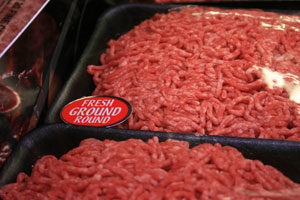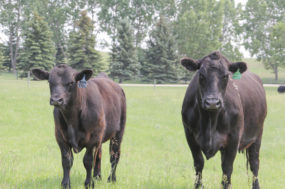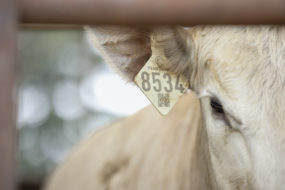“While USDA sets national nutritional guidelines for school meals, school districts make local decisions on what food to feed kids to meet these guidelines,” the USDA said in a press release.
The lean beef mixture is derived from a heating process where lean trimmings are separated from fat. The meat is then treated with a small amount of ammonium hydroxide gas, which kills pathogenic bacteria and helps prevent e.coli and salmonella. The same process, according to companies like Beef Products Inc., is used in the production of other foods like breads and puddings.
Gary Acuff, a director for food safety and a professor of food microbiology at Texas A&M University, told the American Meat Institute that the food-grade ammonia is a naturally occurring compound in the environment, plants and our bodies. He said the ammonium hydroxide used is not the high-grade cleaning ammonia that activists and critics claim is being applied to beef.
The USDA declared in 1974 that ammonium hydroxide was Generally Recognized As Safe (GRAS) compound in beef production.
Food critics nationwide grasped onto the “pink slime” label to spread their criticism of the product on blogs and social media. Adding more scrutiny to the issue were a video of TV chef Jamie Oliver demonstrating a process where trimmings are used, but where he soaked ground beef in cleaning-grade ammonium.
Other blog photos used pictures of a thick pink liquid from a food plant were also labeled “pink slime” but were actually pictures of processed chicken meat.
ABC News’ reports quoted from Kit Foshee, a former corporate quality assurance manager at Beef Products Inc., who was allegedly fired in 2001 for his claimed disagreement about the use of ammonia in beef trimmings. Foshee’s statements have been used in New York Times’ previous stories on beef safety.
Critics also grasped onto the fact that national chains, such as McDonald’s and Taco Bell, had dropped the use of lean beef trimmings in their ground beef, while the USDA had not. Although no firm figure can be determined, estimates went out that as much as half the ground beef in retail grocery markets have lean beef trimmings.
The National Meat Association responded with its own website, pinkslimeisamyth.com that posted several responses to the media controversy, and food industry responses defending the science used with lean trimmings in ground beef.
“I have first-hand observations of this process on several occasions,” said national Meat Association CEO Barry Carpenter in an interview with RFD Today. “’Pink slime’ would never come into my mind as a way to describe this process or this product. The people who coined this term certainly have not seen the process. It’s a visual image they’ve created, apparently by how they think the process must work.”
J.D. Alexander, president of the National Cattlemen’s Beef Association, said “lean finely textured beef is a 100 percent beef product … that yields an additional 10-12 pounds” of lean beef from each animal, prevents waste of the animal and makes beef affordable, safe and healthy.
“It is truly unfortunate and a severe disservice to our nation’s beef producers and all consumers that media outlets have resorted to misleading the American public and sensationalizing this safe, lean beef product,” Alexander said.
“As school districts and parents work to make decisions about the food they serve their children, they should feel confident, regardless of the type of beef they choose, that they are serving the safest, most wholesome beef product in the world.” ![]()
PHOTO
The USDA will begin providing options to school lunch programs on the variety of ground beef they wish to serve to students. Staff photo.








